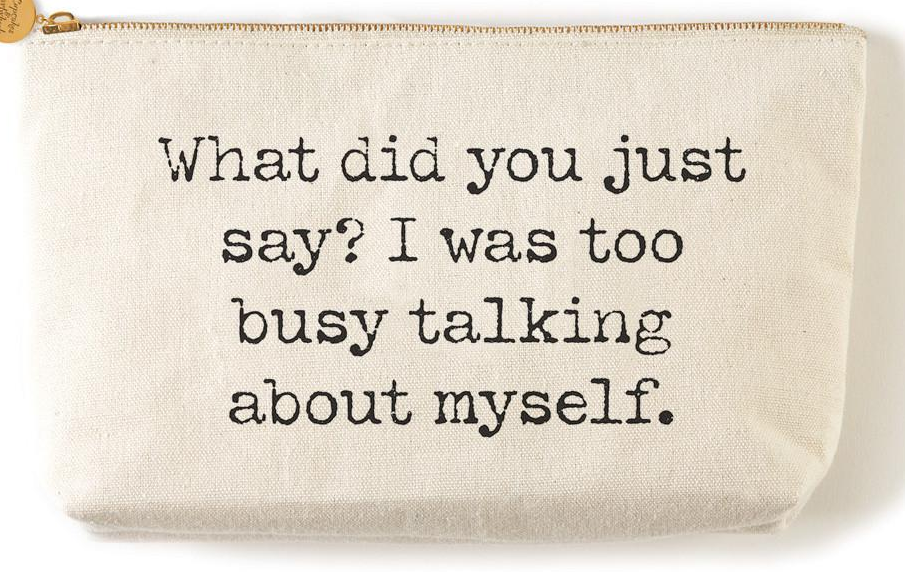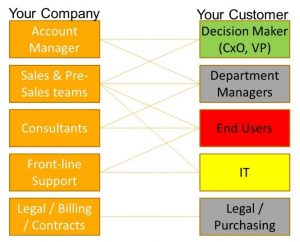Search Waypoint Resources
Are you making this critical connection with your customers to strengthen relationships and drive loyalty?

Customer Success is typically defined as, “ensuring customers achieve their desired outcomes while using your product or service.” If you’re relying on this explicit definition to drive retention and expansion then you’re missing a better opportunity.
The key to scalably accelerating profitable growth is by creating truly loyal customers. And the shortest path to true loyalty is by demonstrating that the people within your company are listening. Here’s why that’s true and how to make this critical, emotional connection with your key customer contacts to strengthen relationships and drive true loyalty.
Attitudinal Loyalty Accelerates Profitable Growth

Do you really think of this as loyalty?
We all want loyal customers. Consider that there are two types of loyalty:
- Behavioral loyalty, which is often the mantra of B2C companies that measure loyalty through repeat purchase behavior, and
- Attitudinal (heartfelt) loyalty, which must be the mainstay of B2B companies because
- We all understand the notion of “trapped” customers due to high switching costs (i.e. unhappy customers may still buy from you but are unlikely to expand, are likely to be working behind your back to spread negative word-of-mouth, and will find a replacement that will later come to your surprise);
- Companies don’t have emotions; people do. The “customer” for most B2B providers is really a Buying Committee — a collection of people with differing roles/persona (decision makers, budget holders, business influencers, architects/designers, program and project managers, end users, etc.). There are few opportunities for the people in your customer accounts to actually demonstrate “repeat purchase behavior” because purchase decisions generally fall to teams and not individuals.
- We know that people leave their employers to go to new companies, and you ideally want those people to take you with them.
- Critically, you’re probably finding that the Buying Committee members differ from year-to-year as people change jobs. This means that the players have less skin-in-the-game because the initial decision wasn’t theirs. You’re also likely to find less alignment on this team on this team around the required processes to acquire desired outcomes.
- Your company also has employee turnover. I sure hope your Customer Success / Account Management teams aren’t relying on the customer to provide the lay-of-the-land when getting introduced into the account. Your company needs clear processes that capture and self-document what’s working, not-working along with the plan forward.
True (attitudinal) loyalty goes deeper than retention. There are many reasons businesses will continue buy from a supplier and exhibit behavioral loyalty. A renewal isn’t enough to demonstrate loyalty: Those people that are attitudinally (truly) loyal will drive their organizations to buy more, expand into your additional product lines, tell their friends and colleagues to buy from you, serve as a reference, and be less costly to serve.
Demonstrate Listening to Create Loyalty
On her final broadcast, Oprah Winfrey shared this key learning from 25 years as host of her show:
“I’ve talked to nearly 30,000 people on this show, and all 30,000 had one thing in common: They all wanted validation. If I could reach through this television and sit on your sofa or sit on a stool in your kitchen right now, I would tell you that every single person you will ever meet shares that common desire. They want to know: ‘Do you see me? Do you hear me? Does what I say mean anything to you?” – Oprah Winfrey

B2B == Complex Relationships: Who Has a Full Picture of the Account Relationship? The customer certainly does… are you listening?
The beautiful thing is that all companies ought to have a robust customer feedback effort anyway. Who knows best what problems / concerns / issues your customers are experiencing? Who can tell you clearly what is working well and what should be improved? Who can tell you if the customer is happy or unhappy, and why? In all cases the answer is CUSTOMER. Sadly, most companies seem to think they know better, coming up with solutions to problems that may or may-not be the top priorities (or may not even exist). But even when working on the things that will better serve customers, if your company isn’t demonstrating listening then you’re missing out on the opportunity to drive true loyalty.
Proper execution of this process results in:
- 1:1 improvements: Customer Success / Account Management teams will more easily strengthen relationships with the key contacts in the accounts that matter most: decision makers, influencers, and other leaders that can drive growth (think expansion into new divisions and/or products, not just more licenses to the same).
- 1:Many improvements: Product, Service, and Support teams drive the optimal set of product and service improvements (not just what they think could be most effective).
If your objective is to accelerate profitable growth (and why shouldn’t it be?), then your customer feedback program ought to go well beyond just measuring Net Promoter Score (NPS) / customer sentiment and instead be oriented to capture the voice-of-customer. We like the H-E-A-R framework:
- Harness a coalition to ensure the company is ready to listen: With whom do you need to partner inside your company to ensure listening? I hope you don’t just want a vanity metric… I think we’re all tired of those NPS press releases that promote a company’s own artificially-high/gamed Net Promoter Score. Product, Service, and Leadership all probably need trustworthy and representative feedback to drive priorities.
- Engage the right contacts in the account to acquire feedback. No point in trying to get feedback from the wrong contacts! You’ll probably want to engage your account teams to help validate the list and help show that their feedback will be addressed and not go into a black hole. Warning: Don’t be so focused on end-users that you’re skipping the Buying Committee members.
- Act!
- Enable front-line Account / CSM teams to examine the feedback from (at least) each strategic account, individually (“1-to-1”): At least for those accounts that are critical to your company, CSMs have an opportunity to show the key contacts in the account that their feedback matters (i.e. that you listened to them). Use a solution like TopBox to make this easy with insights that show the areas in which the CSM can best make a difference (not to mention that systematically capturing feedback will self-document what’s working well or not, enabling others around the company to assist or takeover when the CSM moves into a new role). Make the time to show them what you heard with this Business Review / Success Planning template to use with your customers. Once you’ve highlighted their feedback results, it becomes easy to establish a plan with each of your strategic accounts to decide what needs to be done and who’s going to do it. No doubt there are workarounds, different approaches and best -practices, customer education and training, and existing roadmaps that your customer will want to know about.
- Analyze the feedback by segment (“1-to-Many”): Understand where the optimal improvement opportunities lie by using the right tools to identify those patterns across accounts that require attention from Product, Service, Support, Marketing, etc. Just because something scores low doesn’t mean that an improvement there will drive the biggest bang-for-the-buck. Key-driver analysis becomes critical here.
- Reveal the results. Close the loop by showing your customers that you heard them. Even those customer contacts that didn’t respond will be interested to know what you heard and what you are doing about it. High-growth companies have created sections in their website to showcase their customer listening. Even without taking that step, don’t you owe it to your customers to let them know that their feedback didn’t go into a black hole?

An Insight-to-Action process drives ROI, starting with candid DIALOGS centered on your customers’ needs
Summary:
- True loyalty isn’t just retention. There are many reasons why a customer may stick with you yet be unhappy and likely to spread negative word-of-mouth or jump ship at the first opportunity.
- Loyalty is an emotional bond that enables your customers to work on your behalf, drive expansion opportunities, spread positive word-of-mouth, help you innovate, and be easier to serve.
- True loyalty comes from demonstrating that you hear your customers. Stop talking about yourself and listen.
- Leverage the H-E-A-R framework. Demonstrated listening comes from asking for feedback and then following up to address what you heard. For strategic relationships, think of this activity as 1:1, working with the key contacts in the account to drive the right plays. For the long-tail of small accounts, an effective analysis of all the feedback is critical so you can explain how you are addressing what they tell you. After all, if you asked for feedback, then you should care to listen to it. If you don’t, know that surveys without action do more harm than good.
Bottomline: Make the time to get the feedback; hear what your customers (i.e. the contacts/persona within your accounts) are thinking and feeling. Then confidently know that you’re doing the right thing(s), closing the loop with your customers to show how you are listening. You will then reap the rewards of customer loyalty: easier renewals, new expansion opportunities, accelerated sales via more referrals, better customer references, and the thrill of knowing that you’ve been able to help your customers succeed (since, after all, Failure Sucks! More For Your Customers Than For You)